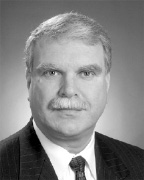Ask any assortment of commercial real estate professionals, fund managers, and investors a key question and you will get a sense of their confidence in core real estate as an asset class: "How do you plan to exit this investment?"
Every elementary text on real estate investing advises the reader to identify how they intend to exit the investment when their expected holding period comes to an end.
With record low going-in returns and yield rates used to underwrite good quality assets, how will investors sell out at a profit? How will they refinance their debt should rates spike in the next few years? Is there, with apologies to Jean Paul Sarte, "No Exit"?
There is no clearly defined consensus with an abundant field of optimists and pessimists each touting their own personal views of future performance. The hope, indicated one investment fund manager with whom I lunch with a few weeks ago, is that rental rates and net incomes will rise at a pace that will still allow for asset appreciation, even if interest rates and the cost of debt rises. He did admit, however, that "We aren't buying lots of product at this point. It's tough to compete and make the numbers work and we lose out on lots of deals because we just aren't willing to be aggressive enough."
"It all comes down to risk", noted one pension fund manager, "our advisors provide us with an annual report across fifteen asset classes and they model recommended allocations. They still think core real estate is an area where we have to be, given the returns. What we continue to hear is that core commercial real estate is still seen as one of the more attractive areas in which to invest despite the identified risks and we continue to allocate a substantial portion of our funds in that area."
Despite the uncertainties, there is a general expectation among some real estate economists that overpriced real estate should not be a primary concern at this point in time. In the October 2014 annual meeting of the Counselors of Real Estate, held here in Boston, Ray Torto, Phd. CRE, Harvard University lecturer and Doug Poutasse, CRE, Executive Vice President and head of Strategy and Research at Bentall Kennedy, both expressed confidence in the US Economy and in a broad array of real estate asset types and markets. Both agreed that new workforce housing being built near employment bases is responding to the demands of younger workers and bolsters economic growth. With a growing and stable US economy and continued foreign investor interest, neither expressed serious concerns about real estate asset values being a problem.
While it is important to identify that investments do not always work out for a host of reasons, the actions of buyer and sellers are what really express the sentiments of the investment community as a whole. Right now what the market is telling us is that the pricing of high quality core assets in good markets is supported by a broader economic outlook and the relative attractiveness of commercial real estate as a stable asset class. It appears that there may be a way out after all...one way or another of course.
Donald Bouchard, CRE, senior vice president at Lincoln Property Company, Boston and is the 2015 chair of the New England Chapter of the Counselors of Real Estate (CRE).
Tags:









